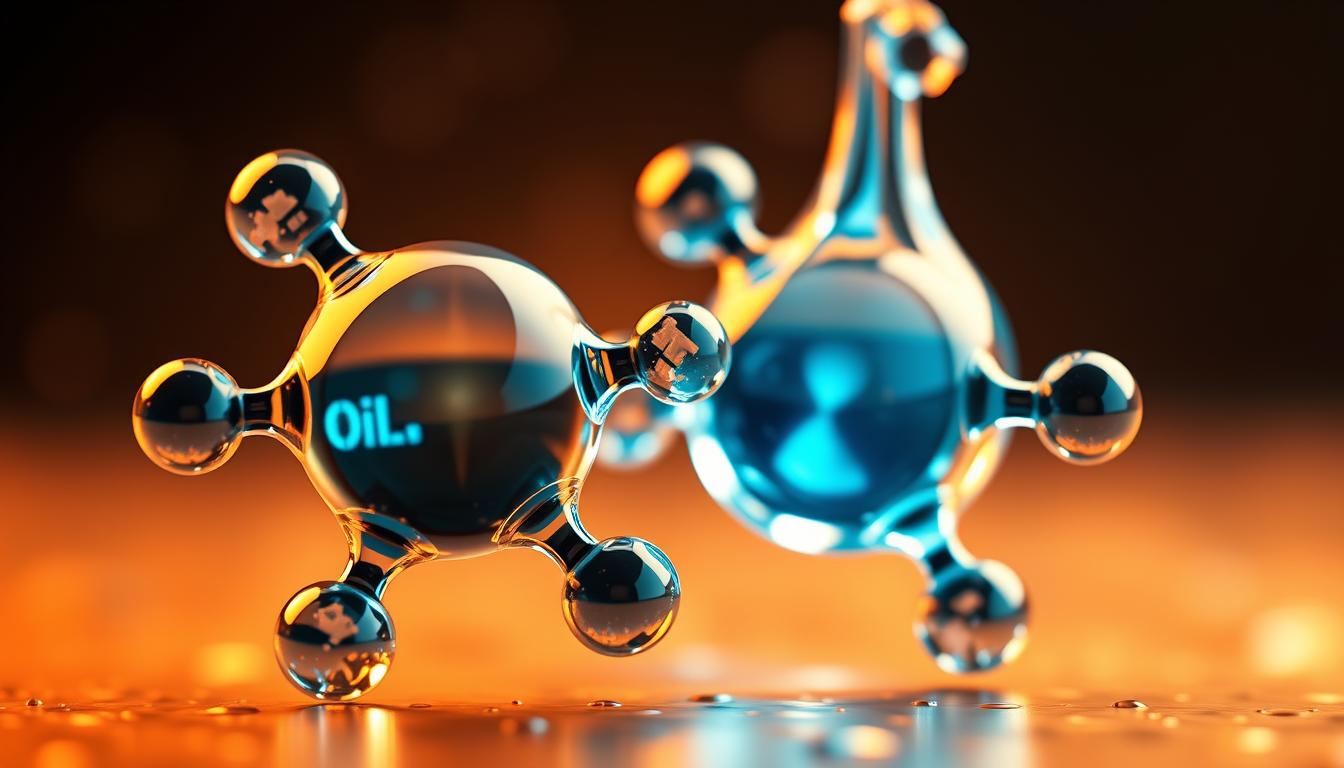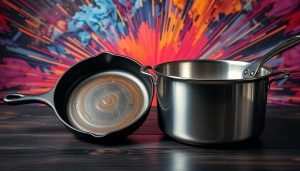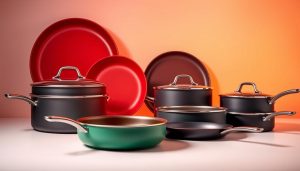Over 36 million gallons of oil spill into oceans annually, yet none of it truly blends with seawater. This stubborn separation between two common liquids reveals a fundamental truth about matter: not all substances play nice. You’ve seen it in salad dressings and gasoline puddles—those instant boundaries forming between liquid layers.
At the heart of this phenomenon lies a molecular showdown. Water’s particles carry subtle electrical charges, creating attractions that oil simply can’t reciprocate. Imagine trying to hug someone wearing a frictionless suit—that’s essentially what happens when these substances meet.
This clash of personalities affects more than just your vinaigrette. Industrial engineers and environmental scientists constantly battle or exploit this rivalry. From cleaning grease traps to designing better medicines, understanding this basic chemical principle shapes solutions to real-world challenges.
Key Takeaways
- Liquid separation stems from opposing electrical properties at molecular level
- Water’s charged particles naturally repel non-charged substances
- Density differences create visible layering effects
- This principle impacts fields from cooking to pollution control
- Molecular behavior explains many common household observations
- Scientific understanding enables practical problem-solving
Understanding the Science Behind Oil and Water
Watch a salad dressing bottle settle, and you’ll witness nature’s chemistry in action. Two forces battle silently—molecular attraction and physical buoyancy—determining why some liquids refuse to blend.

Polarity Creates Molecular Magnetism
Water’s oxygen atom acts like a tiny magnet, pulling hydrogen atoms into charged positions. This creates polar molecules that stick together like puzzle pieces. Oil lacks these magnetic properties—its molecules remain electrically neutral.
Think of water as dancers holding hands through hydrogen bonds. Oil molecules move freely without forming connections. When they meet, water’s charged particles push away uncharged oil molecules like opposing magnets.
Density Dictates Layer Formation
Buoyancy forces amplify the separation. Oil’s lightweight structure makes it float, while water’s dense molecules sink. This creates visible layers in puddles, oceans, and cooking pans.
| Substance | Density (g/cm³) | Behavior in Water |
|---|---|---|
| Olive Oil | 0.92 | Floats |
| Seawater | 1.03 | Sinks |
| Gasoline | 0.72-0.78 | Forms surface layer |
This density difference explains why spilled fuel spreads across lakes instead of sinking. Engineers use this principle to design oil containment systems that trap surface pollutants.
Why Oil and Water Don’t Mix
Grab two clear bottles from your recycling bin—you’re about to become a molecular matchmaker. Simple kitchen experiments reveal how surfactants temporarily unite rival substances through clever chemistry.

Surfactants, Emulsifiers, and Their Function
Dish soap acts as a peacemaker in the oil-water feud. Its amphiphilic molecules have dual personalities—one end bonds with water, while the other clings to oil. This creates unstable truces called emulsions when you shake the mixture vigorously.
In your first bottle (oil + water), tiny oil beads form temporarily before rising to the top. Add soap to the second bottle, and the mixture turns cloudy. The soap molecules surround oil particles, creating micelles that delay separation for minutes instead of seconds.
Insights from Hands-On Experiments
Try adding food coloring to track movement. Water-based dyes sink through oil layers but spread rapidly in soapy mixtures. You’ll notice three phases emerge over time: colored water at the bottom, cloudy emulsion in the middle, and clear oil on top.
Timing reveals surfactant effectiveness. Without soap, layers reform in under a minute. With detergent, separation takes 5-10 minutes as molecular bonds gradually break. This explains why dish soap removes grease—it temporarily suspends oil in water until rinsing washes both away.
Practical Applications and Everyday Observations
Creating a lava lamp isn’t just fun—it’s a lesson in chemistry. These principles shape daily experiences, from meal prep to environmental protection. Let’s examine how molecular behavior impacts three key areas.
From Kitchens to Cleanup Operations
Shake a salad dressing bottle, and you create temporary truces between rival liquids. The emulsion breaks quickly because vinegar’s polar molecules eventually repel oil. This same principle helps explain why greasy dishes need soap—surfactants create stable bonds between food residue and wash water.
Environmental engineers face similar challenges with oil spills. Specialized materials like hydrophobic sponges work like giant molecular sieves:
| Material | Effectiveness | Science Principle |
|---|---|---|
| Cotton Balls | Absorbs surface oil | Capillary action |
| Specialized Sponges | Traps 90%+ pollutants | Molecular adhesion |
| Paper Towels | Limited absorption | Surface tension |
Salt adds drama to experiments. Sprinkle it into oil-water mixtures, and crystals drag oily droplets downward temporarily. Food coloring remains trapped in water layers, creating vivid boundaries that reveal hidden molecular alliances.
These concepts extend beyond the lab. Cosmetic chemists design lotions using emulsifiers, while chefs manipulate densities to craft layered desserts. Understanding liquid relationships helps solve problems across industries.
Conclusion
Every time you wash greasy pans, you’re witnessing a molecular standoff that shapes industries. At its core, this battle boils down to incompatible electrical properties. Water’s charged particles form tight alliances, while oils remain neutral outsiders—a mismatch preventing true partnership.
Density differences add visual drama to the separation. Lighter oils rise, creating distinct layers that inform everything from cooking techniques to spill containment strategies. These principles power practical solutions across fields—hydrophobic materials trap pollutants, while emulsifiers create temporary truces in food products.
Hands-on experiments reveal nature’s consistency. Whether shaking dressing bottles or testing cleanup methods, you’ve seen how molecular behavior dictates outcomes. This knowledge forms a foundation for understanding advanced chemistry, material science, and environmental protection efforts.
The stubborn divide between these substances isn’t just curiosity—it’s a blueprint for innovation. By mastering these interactions, you gain tools to solve challenges from kitchen counters to ocean ecosystems.



